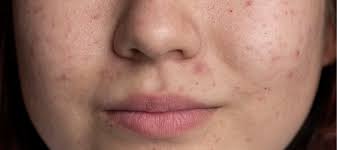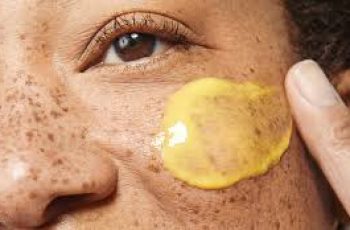
Bumpy, Rough Skin: Causes and Treatment Options
If you’ve ever looked in the mirror and noticed that your skin feels uneven, rough, or bumpy, you’re not alone.
Rough skin texture is a common complaint affecting many people across various skin types and ages.
The bumps can feel like sandpaper, small raised spots, or even resemble tiny pimples, making the skin surface look dull and unhealthy.
Understanding what’s causing these bumps is the first step toward smoother, healthier skin.
In this article, we’ll explore the most common causes of rough, bumpy skin, including keratosis pilaris, folliculitis, dry skin from an impaired barrier, and more.
We’ll also cover effective treatment options to help you smooth your skin and prevent these bumps from coming back.
What Causes Rough, Bumpy Skin?
There are many reasons your skin might feel rough or develop small bumps. Some of the more common causes include:
Keratosis Pilaris (KP), Folliculitis, Dry skin or impaired skin barrier, Goosebumps (Piloerection)
Other skin conditions such as acne, eczema, or milia.
Each condition has distinct characteristics and requires different treatments, so it’s important to identify which applies to you.
Different Kinds of Rough Bumps on the Skin
Many skin issues can cause bumpy, rough texture, often resembling sandpaper or tiny pimples. Here’s a quick overview of potential causes:
Acne, Actinic Keratosis, Asteatotic Eczema, Dermatitis Herpetiformis, Folliculitis, Goosebumps (Piloerection), Granuloma Annulare, Ingrown Hairs (Pseudofolliculitis), Keratosis Pilaris
Lichen Planus, Milia, Molluscum Contagiosum, Perioral Dermatitis, Seborrheic Keratosis
Among these, keratosis pilaris is often the condition that feels the most like sandpaper.
What is Keratosis Pilaris?
Keratosis pilaris, commonly called KP, is a harmless but annoying skin condition that causes rough, dry bumps typically on the upper arms, outer thighs, and sometimes the cheeks.
The bumps are caused by a buildup of keratin—the protein that protects skin—from clogging the hair follicles.
KP bumps are usually red or flesh-toned and don’t hurt or itch, but they can make your skin feel dry and rough. Because KP is a result of excess keratin production, it’s sometimes called “chicken skin.”
How to Treat Keratosis Pilaris
Treating KP focuses on two main steps: exfoliation and moisturization.
Exfoliation helps remove the excess keratin buildup that forms the bumps.
Moisturization prevents the skin from becoming dry and stops keratin from accumulating again.
The best exfoliant depends on your skin type:
If you have sensitive skin, chemical exfoliants such as alpha hydroxy acids (AHAs) or beta hydroxy acids (BHAs) are usually better tolerated than physical scrubs.
For other skin types, gentle physical exfoliants may be beneficial but should be used carefully to avoid irritation.
Using these treatments consistently can help smooth the skin over time, but KP often requires ongoing maintenance.
What Are Goosebumps?
Goosebumps, or piloerection, are temporary raised bumps caused by tiny muscles called arrector pili pulling hair follicles upright. This reflex occurs when you’re cold or emotionally stressed.
How Goosebumps Work
When cold or scared, your sympathetic nervous system activates.
It releases norepinephrine, a neurotransmitter.
Norepinephrine causes the arrector pili muscles to contract.
Hair follicles are pulled up, creating tiny bumps on the skin — the goosebumps.
This action traps air to help animals retain heat or appear bigger to predators.
In humans, goosebumps are a leftover evolutionary reflex without a clear practical use since we have little body hair.
How to Differentiate Goosebumps From Other Bumps
Goosebumps are temporary and go away when the stimulus (cold or fear) is gone.
If bumps persist or are on the face, they are more likely to be caused by keratosis pilaris or another skin condition.
What is Folliculitis?
Folliculitis is an inflammation or infection of hair follicles, appearing as red, pus-filled bumps that often resemble acne.
Causes of Folliculitis
Bacterial or fungal infections.
Shaving or waxing.
Wearing tight-fitting clothes that trap sweat.
Hot tubs or pools that aren’t properly sanitized.
Pityrosporum folliculitis, a fungal form common in people who wear tight gym clothes.
Folliculitis is often itchy, which helps differentiate it from acne.
How to Treat and Prevent Folliculitis
Use moisturizing shaving cream and shave in the direction of hair growth to avoid irritation.
Shower or change clothes immediately after sweating.
Avoid tight clothing when possible, especially if you develop bumps.
Warm compresses can soothe mild cases.
For severe or persistent folliculitis, consult a dermatologist who may prescribe topical or oral antibiotics or antifungals.
Dry, Rough Skin and the Impaired Skin Barrier
Dry, rough skin often results from an impaired skin barrier. The skin barrier is the outermost layer of your skin that retains moisture and protects you from allergens and irritants.
What Causes Barrier Damage?
Genetics can make some people more prone to dry skin.
Environmental factors such as sun exposure, cold wind, and harsh soaps.
Lifestyle habits, like excessive washing or use of drying products.
When your barrier is damaged, skin loses moisture and becomes dry, flaky, and rough. In darker skin tones, this dryness can look gray or ashy.
How to Treat Dry, Rough Skin
The best way to treat dry, bumpy skin caused by barrier damage is through barrier repair moisturizers.
These moisturizers contain lipids similar to those in healthy skin, restoring hydration and protecting the skin.
Choosing the Right Moisturizer for Rough Skin
Look for moisturizers that have a maltese cross pattern under the microscope, indicating they mimic skin’s natural lipids.
For red, rough, and bumpy skin: try Zerafite Soothing and Calming Moisturizer.
For rough, bumpy skin with wrinkles: try Zerafite Wrinkle Defense Barrier Cream.
For rough, bumpy skin with dark spots: try Zerafite Brightening Barrier Cream, which also helps brighten the skin.
Applying these moisturizers twice daily helps restore the barrier, reduce flaking and itching, and reveal smoother skin.
Tips for Healthy, Smooth Skin
Avoid tight clothing when sweating, which can irritate hair follicles and worsen bumps.
Use proper shaving techniques—moisturizing shaving cream and shaving in the direction of hair growth.
Protect your skin barrier with gentle cleansers and barrier-repair moisturizers.
Avoid harsh exfoliants if you have sensitive skin.
Stay hydrated and protect your skin from excessive sun exposure and cold wind.
When to See a Dermatologist
If bumps are persistent, worsening, itchy, or painful, it’s important to consult a dermatologist. They can diagnose the exact cause and recommend prescription-strength treatments or procedures.
Summary: Managing Rough, Bumpy Skin
Rough, bumpy skin is a common problem with many possible causes, including keratosis pilaris, folliculitis, dry skin, and more. Identifying your specific cause is the key to effective treatment.
For keratosis pilaris, exfoliation and moisturization are essential.
For folliculitis, hygiene, shaving techniques, and avoiding tight clothing help prevent flare-ups.
For dry, rough skin, barrier repair moisturizers restore hydration and protect skin.
Goosebumps are temporary and harmless.
Understanding your skin type and adopting a targeted skincare routine will help you achieve smooth, healthy skin and prevent bumps from coming back.
If you want personalized advice and product recommendations tailored to your skin type and concerns, [take our skin care routine quiz now] to get started on your path to smoother, clearer skin!


